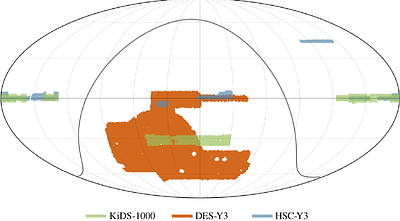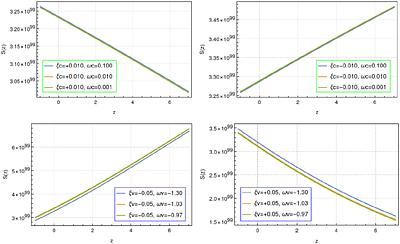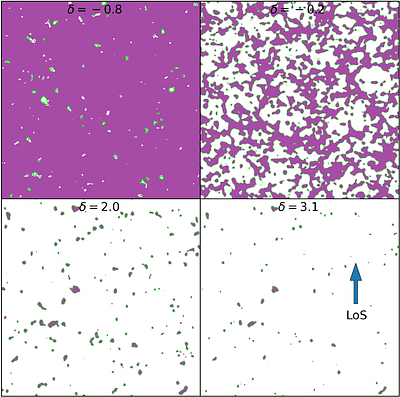By: Mohit Panwar, Akash Gandhi, Pankaj Jain
Reanalysis of Stage-III cosmic shear surveys: A comprehensive study of shear diagnostic tests
By: Jazmine Jefferson, Yuuki Omori, Chihway Chang, Shrihan Agarwal, Joe Zuntz, Marika Asgari, Marco Gatti, Benjamin Giblin, Claire-Alice Hébert, Mike Jarvis, Eske M. Pedersen, Judit Prat, Theo Schutt, Tianqing Zhang, the LSST Dark Energy Science Collaboration
By: Fuxing Qin, Yuting Wang, Gong-Bo Zhao
By: Juri Smirnov
By: Neerav Kaushal, Elena Giusarma, Mauricio Reyes
By: A. Shahriar, M. Abbasiyan-Motlaq, M. Mohsenzadeh, E. Yusofi
By: Abbé M. Whitford, Hugo Rivera-Morales, Cullan Howlett, Mariana Vargas-Magaña, Sébastien Fromenteau, Tamara M. Davis, Alejandro Pérez-Fernández, Arnaud de Mattia, Steven Ahlen, Davide Bianchi, David Brooks, Etienne Burtin, Todd Claybaugh, Axel de la Macorra, Peter Doel, Simone Ferraro, Jaime E. Forero-Romero, Enrique Gaztañaga, Satya Gontcho A Gontcho, Gaston Gutierrez, Stephanie Juneau, Robert Kehoe, David Kirkby, Theodore Kisner, Sergey Koposov, Martin Landriau, Laurent Le Guillou, Aaron Meisner, Ramon Miquel, Francisco Prada, Ignasi Pérez-Ràfols, Graziano Rossi, Eusebio Sanchez, Michael Schubnell, David Sprayberry, Gregory Tarlé, Benjamin Alan Weaver, Pauline Zarrouk, Hu Zou
By: Wei Liu, Liang Wu, Francisco Villaescusa-Navarro, Marco Baldi, Georgios Valogiannis, Wenjuan Fang
By: Jiachen Bai, Jun-Qing Xia, Gong-Bo Zhao
By: Jie Zheng, Da-Chun Qiang, Zhi-Qiang You









